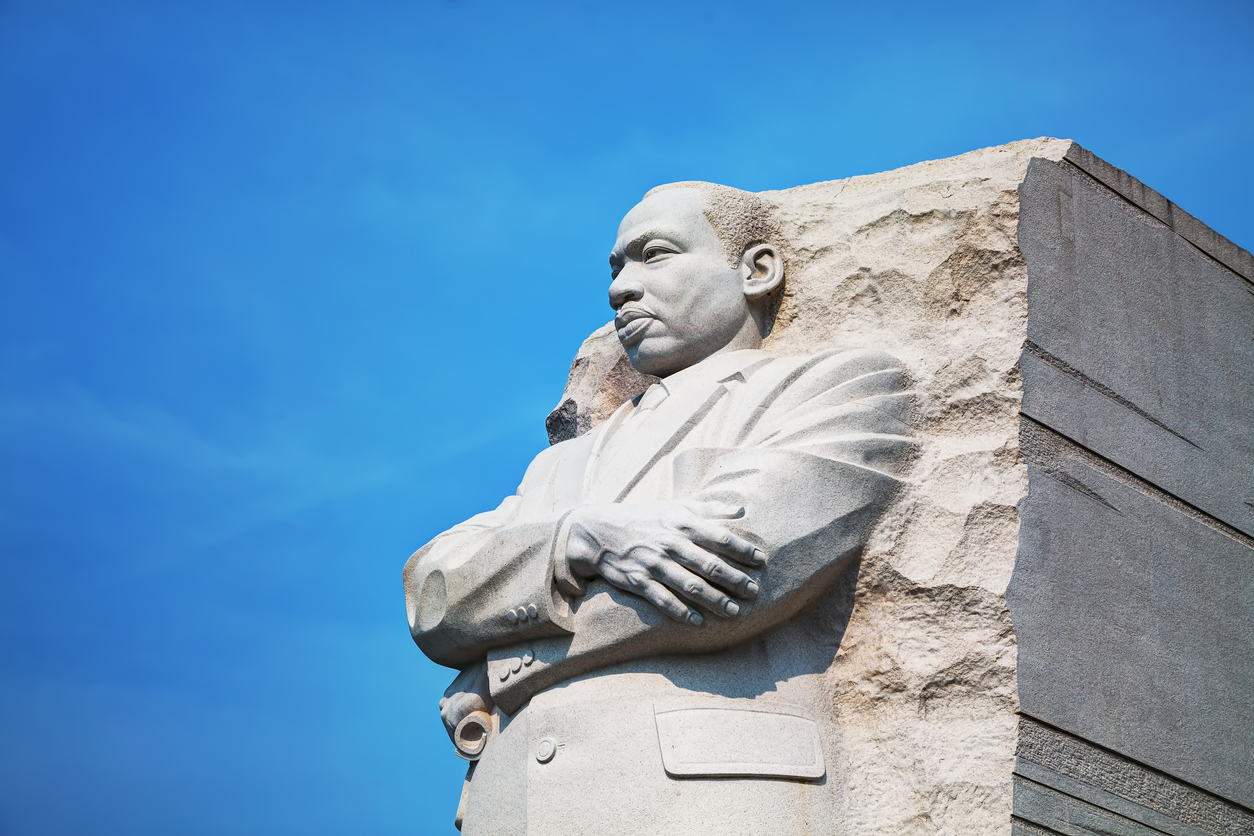“Separation, segregation, inevitably makes for inequality.” Two years after the U.S. Supreme Court’s landmark Brown v. Board of Education ruling, Martin Luther King Jr. gave a provocative speech to the National Committee for Rural Schools. In it, he argued for an expansive vision of equality—one that went well beyond desegregation—and directly challenged education systems to confront inequality and inequity. Today, more than six decades after Brown, and more than fifty years after his assassination, educational equality in America still falls short of Dr. King’s vision for the future.
Dr. King understood equality as more than desegregation. “You see, equality is not only a matter of mathematics and geometry, but it’s a matter of psychology. It’s not only a quantitative something, but it is a qualitative something. And it is possible to have quantitative equality and qualitative inequality.” In other words, de jure victories don’t always lead to de facto equality. And equality isn’t the same thing as equity. If equality demands that we distribute opportunities equally, equity raises the bar by demanding we ensure all students can benefit equally from those opportunities.
Pervasive inequities persist
The history of desegregation in American public schools is long and complicated. When President Kennedy started advocating for a Civil Rights bill about a decade after Brown, 99% of Black students in the South attended completely segregated schools. By 1970, intense legal pressure, grassroots activism, and other factors had helped make schools in the South more integrated than those in any other region. But consistent progress on desegregating American public schools, and providing high-quality education across race and income level, has proven elusive. There have been major setbacks in recent years, especially at the high school level.
Segregation has actually increased in the last several decades. The number of schools where fewer than 40% of students are White—an important indicator of segregation, as analysis of data from the National Center for Education Statistics shows—doubled between 1996 and 2016. In 2016, only 29% of Black students attended a school where more than 40% of students were White, compared with 41% in 1996.
Segregation matters, in part, because students who attend schools with large concentrations of students of color or students from low-income families almost always get less than other students. Take, for instance, funding gaps based on race and income level. High-poverty districts receive $1,000 less per student compared with low-poverty districts, and districts serving the most students of color receive $1,800 less per student than districts serving the fewest students of color.
The data also show disturbing gaps in learning outcomes by race. The 2012 National Assessment of Educational Progress (NAEP) found that 17-year-old Latinx and Black students tested 2.6 grade levels below White students—an improvement since the 1970s, although progress has remained relatively stagnant since the 1990s. Today, nearly half (48%) of White students meet college-ready benchmarks in math on the ACT, compared with only 12% of Black students and 25% of Latinx students; in reading, the numbers are 54% of White students, 32% of Latinx students, and 20% of Black students.

*The Condition of College and Career Readiness 2019
Between unequal spending, unequal access to college prep courses, unequal access to rigor, and unequal access to well-trained, experienced teachers, we are shortchanging high school students of color and students from low-income families.
Working toward educational transformation
Dr. King understood the compounding effects of inequities across education, income, employment, housing—and the list goes on. He understood that our society needed to transform itself in many ways in order to achieve its full potential. And here at XQ, we know that what we need today is nothing short of high school transformation.
Our commitment to our XQ Design Principles is grounded in our belief that communities can transform their high schools—and thereby provide all young people with the education they need to achieve their goals and to work together to build a just and equal society.
As we honor the memory of Martin Luther King Jr., we must remember that his expansive vision for equity and equality in America went far beyond desegregation alone. Rather, he challenges us to hold ourselves, and our systems, accountable for narrowing gaps, increasing access to opportunity, empowering young people, and truly transforming public high schools across America so every student can succeed.
“High schools are the next frontier in the fight for educational equity. They are the fulcrum for driving improvement and closing gaps across the system, from the lower grades to higher education.” – Russlynn Ali, Co-Founder and CEO, XQ
Looking to dig deeper on Martin Luther King Jr. Day? Check out some of these resources:
Are you an educator looking to deepen students’ understanding of the King legacy? Check out Teaching Tolerance’s Do’s and Don’ts of Celebrating MLK Day.
Test your knowledge with your friends and family with this Civil Rights Quiz from The New York Times.
Carve out some time to explore this rich collection from The New York Times: Martin Luther King Jr.: 50 Years Later, His Battles Live On.
How are you celebrating MLK Day? Share on social by tagging @XQAmerica and #ReThinkHighSchool or email danielle@xqinstitute.org with any questions or leads.
TAGS:



 Tweet
Tweet 



